At Watkins Family Chiropractic, we believe understanding your body is the first step towards better health. The spine is a vital part of your anatomy, playing a crucial role in your overall well-being. Let's dive into the structure of the spine, its vertebrae, and the intervertebral discs to help you understand how this incredible system works and why spinal health is so important.
The Structure of the Spine
Spinal health starts with the spine. The spine, also known as the vertebral column, is a complex structure made up of 33 vertebrae, intervertebral discs, and various supporting ligaments and muscles. It is divided into five regions:
- Cervical Spine (Neck):
- Comprises 7 vertebrae (C1-C7).
- Supports the skull, allows for head movement, and protects the spinal cord.

- Thoracic Spine (Upper and Mid Back):
- Contains 12 vertebrae (T1-T12).
- Attached to the rib cage, providing stability and protecting vital organs.
- Lumbar Spine (Lower Back):
- Consists of 5 vertebrae (L1-L5).
- Bears the weight of the upper body and allows for movement.
- Sacrum:
- Composed of 5 fused vertebrae (S1-S5).
- Connects the spine to the pelvis.
- Coccyx (Tailbone):
- Made up of 4 fused vertebrae.
- Provides attachment for ligaments and muscles of the pelvic floor.
Vertebrae: The Building Blocks of theSpine
Each vertebra in your spine has a similar structure, consisting of several parts:
- Body: The large, round portion at the front of the vertebra, providing strength and support.
- Vertebral Arch: The bony arch extending from the body, forming the vertebral foramen through which the spinal cord passes.
- Spinous Process: The bony projection at the back of each vertebra, which can be felt through the skin.
- Transverse Processes: Two bony projections on either side of the vertebra for muscle and ligament attachment.
- Facet Joints: Small joints located between and behind adjacent vertebrae, allowing for movement and flexibility.

Intervertebral Discs: The Spine’s Shock Absorbers
Between each vertebra lies an intervertebral disc, which acts as a cushion and shock absorber. They are very crucial to spinal health. These discs are composed of two main parts:
- Annulus Fibrosus: The tough, outer layer of the disc made of concentric rings of fibrous tissue.
- Nucleus Pulposus: The soft, gel-like center of the disc that provides flexibility and absorbs impact.
The discs allow for movement between the vertebrae and help distribute the loads applied to the spine during daily activities.

The Importance of Spinal Health
A healthy spine is essential for overall health and well-being. Here are a few reasons why:
- Protecting the Spinal Cord:
- The spine encases and protects the spinal cord, a vital part of the central nervous system that transmits signals between the brain and the rest of the body.
- Supporting Body Weight:
- The spine supports the weight of the head and trunk, providing the necessary structure for upright posture and movement.
- Facilitating Movement:
- The spine allows for a wide range of movements, including bending, twisting, and rotating, while maintaining stability.
- Absorbing Shock:
- Intervertebral discs and the natural curves of the spine help absorb and distribute mechanical stress during physical activities.
Common Spinal Issues and Chiropractic Care
Understanding the spine’s anatomy helps in recognizing common spinal issues that can affect your health. Some of these issues include:
- Herniated Discs: When the nucleus pulposus pushes through a tear in the annulus fibrosus, causing pain and nerve irritation.
- Degenerative Disc Disease: The breakdown of intervertebral discs over time, leading to pain and reduced mobility.
- Spinal Stenosis: The narrowing of the spinal canal, which can compress the spinal cord and nerves.
- Subluxations: Misalignments of the vertebrae that can interfere with nerve function.
Chiropractic care focuses on diagnosing and treating these and other spinal issues through non-invasive techniques. Regular chiropractic adjustments can help maintain proper spinal alignment, reduce pain, improve mobility, and enhance overall health.
Understanding the anatomy of the spine and its components is crucial for maintaining a healthy and active lifestyle. At our office, we are dedicated to helping you achieve optimal spinal health through personalized care and education. If you have any questions or are experiencing back pain, neck pain, or other related issues, don't hesitate to contact us and schedule an appointment. Your spine is central to your health, and we are here to support you in every step of your wellness journey.
For more information or to book a consultation, visit our website or contact our office today!

